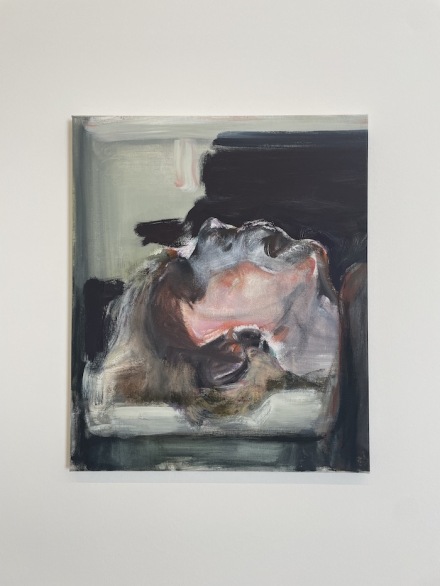
Marlene Dumas, The Martyr (2002-04). All images via Art Observed.
The Pinault Collection’s Palazzo Grassi presents Open-End this summer, a major monographic exhibition of work by Marlene Dumas, the Cape Town-born artist renowned for her portraiture exploring the depth, breadth and intensity of human emotion. Coinciding with the 59th Venice Biennale, the solo-exhibition features over 100 works from 1984 to 2021, including previously unseen paintings such as Persona (2020). Curated by Caroline Bourgeois and the artist herself, open-end spans 33 rooms across two floors of the 18th-century Pinault Collection space alongside the Grand Canal in Venice.First known for her collages and texts, Dumas—who has lived and worked in Amsterdam since 1976—has developed a gestural brand of portraiture hovering between figuration and abstraction. Primarily using oil on canvas and ink on paper, Dumas approaches painting as a performative mode of physical intervention: “Painting is about the trace of the human touch. It is about the skin of a surface. A painting is not a postcard.”
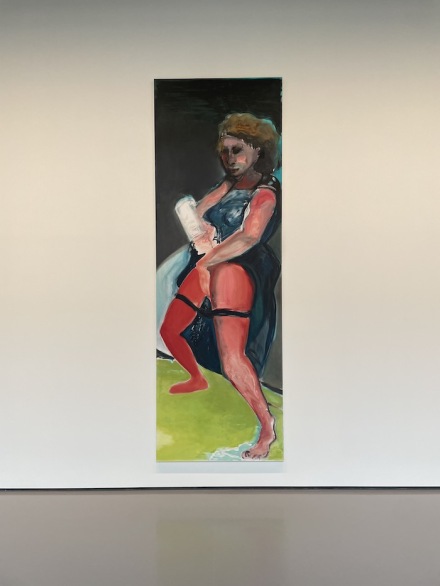
Marlene Dumas, Spring (2017)
Often painting on the floor, allowing liquids to drip down the sides of her canvases, Dumas interrogates the flatness of the picture plane. In Amazon (2016), the stylized hair of the towering female subject appears uniform and thus flat, lacking dimensionality in contrast to the textured, painterly quality of her limbs. Exploring the transfiguration of the body within the frame of the canvas, Dumas captures corporeal fragments with heightened intimacy in Areola (2018) and Lips (2018).
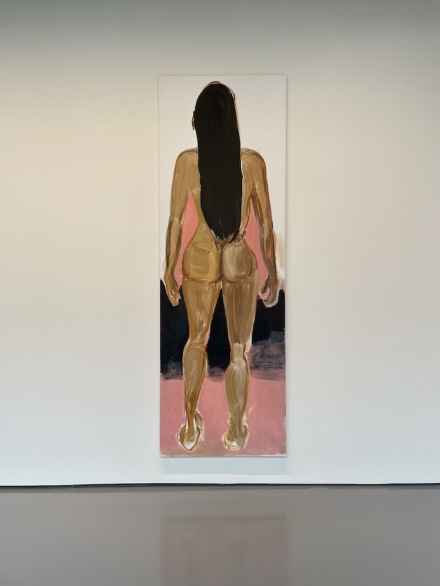
Marlene Dumas, Amazon (2016)
Borrowed imagery is central to her practice probing the dynamics of painterly representation: Dumas extracts and transforms found materials from mainstream newspapers, pornographic magazines, twentieth-century films and art historical references among other sources. Particularly early in her career, Dumas drew inspiration from her own Polaroid shots of close friends and family, such as with The Occult Revival (1984). She explains, “I am an artist who uses second-hand images and first-hand emotions.”
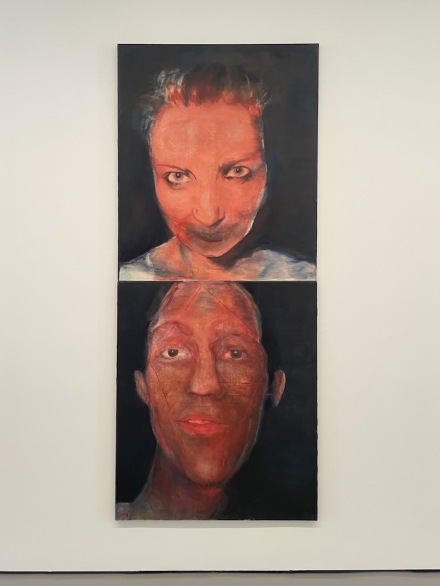
Marlene Dumas, The Occult Revival (1984)
Women loom large as protagonists throughout her portraits as she engages with the art historical canon, adapting the gendered power dynamics between the traditionally male Artist and his female models. In Miss Pompadour (1999) and Dora Maar (The Woman Who saw Picasso cry) (2008), Dumas recontextualizes famed muses, while in The Painter (1994) she positions the young female figure as both the artist and the model.
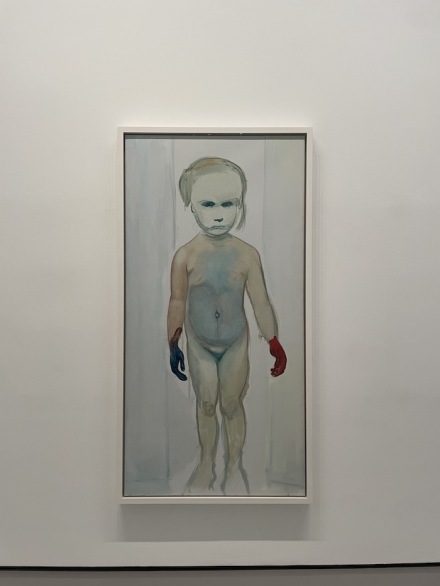
Marlene Dumas, The Painter (1994)
Dumas explores the charged dynamics of desire in works inspired by pornographic imagery including Turkish Girl (1999), which is displayed in the first room of the exhibition. She subverts the arousing aims of pornography, however, to channel a deeper beauty linked to vulnerability and intimacy. She states, “There must be a way to make art about being in love, art that is erotic, sexy, tender and filled with a darkness that is awesome, but not sick.”
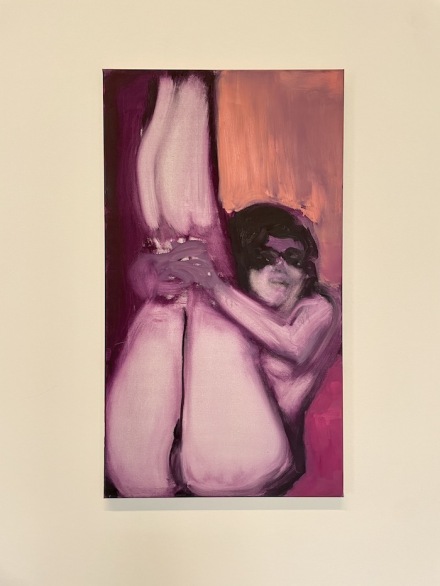
Marlene Dumas, Turkish Girl (1999)
The title “open-end” conveys the unresolved nature of her paintings, which foster indefinite interpretive possibilities. The title simultaneously reflects the uncertainty pervading this post-lockdown era of re-opening, as the devastation of the pandemic that claimed the life of Dumas’s partner Jan Andriesse lingers.
Dumas considers the profound intensity of grief and the impermanence of the material body in Einder (Horizon) (2007-2008), one of few works not depicting the human form. Following her mother’s death, Dumas “wanted to paint a portrait of her without painting her.” The artist strove for continuity beyond death: “I was trying to paint something that had no end.”
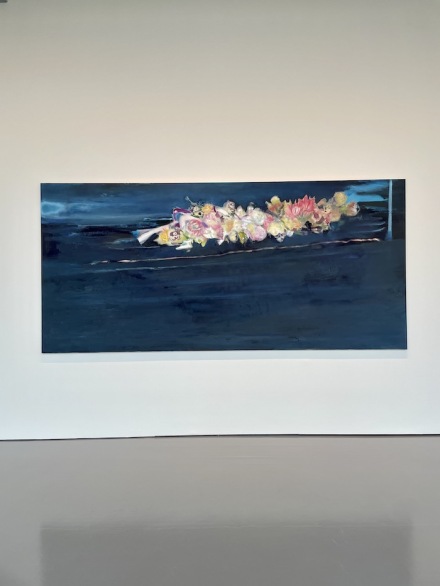
Marlene Dumas, Einder (Horizon) (2007-2008)
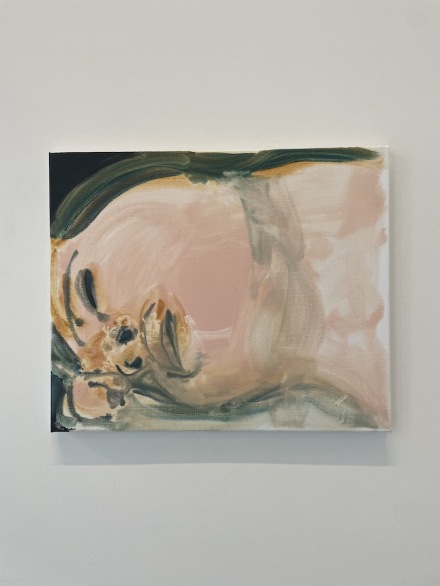
Marlene Dumas, Longing (2018)
open-end marks the first monographic exhibition dedicated to a woman artist in either of François Pinault’s Venice spaces. The sprawling solo-exhibition will be on view through January 8th, 2023.
— A. Chisholm
Read More:
Marlene Dumas: open-end [Exhibition Site]



